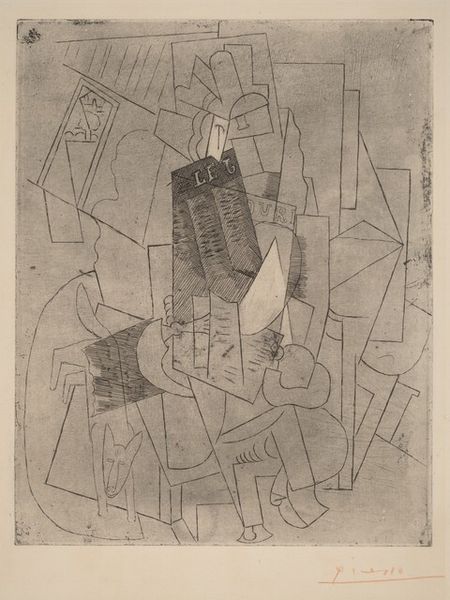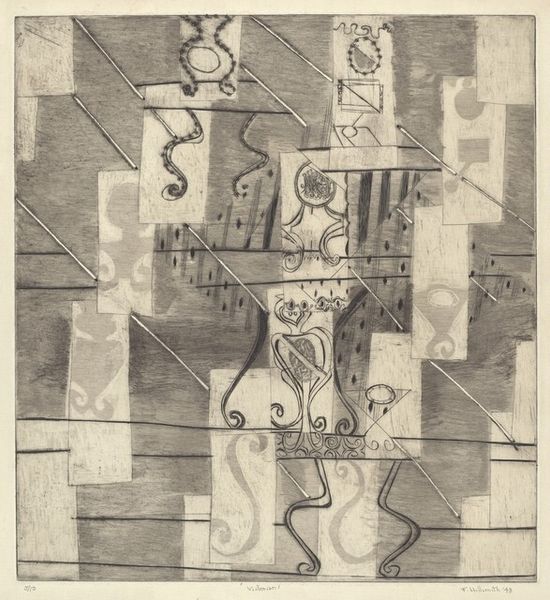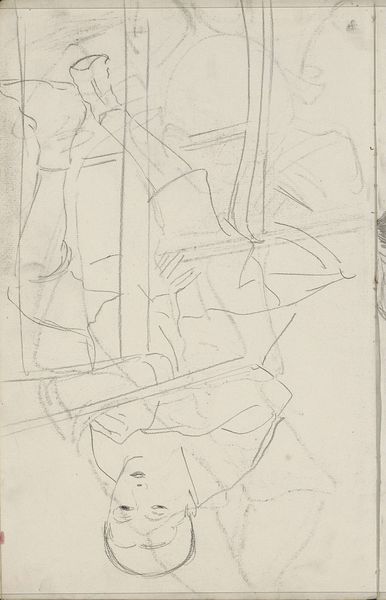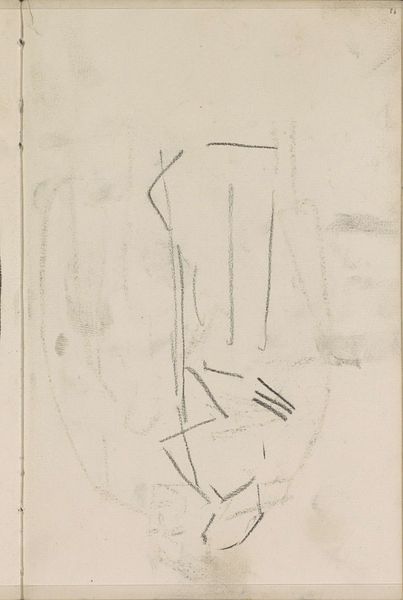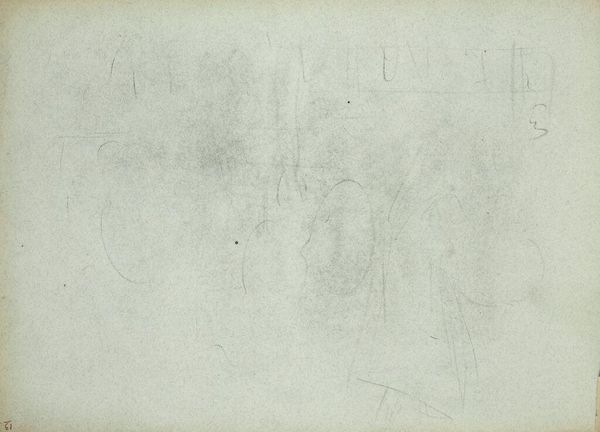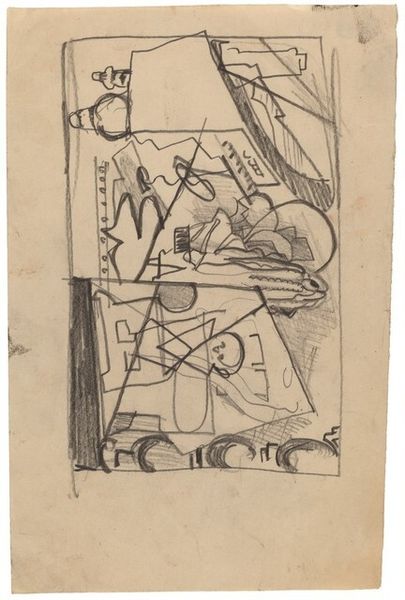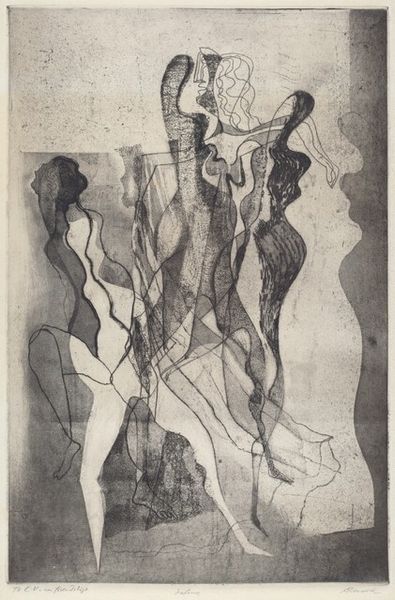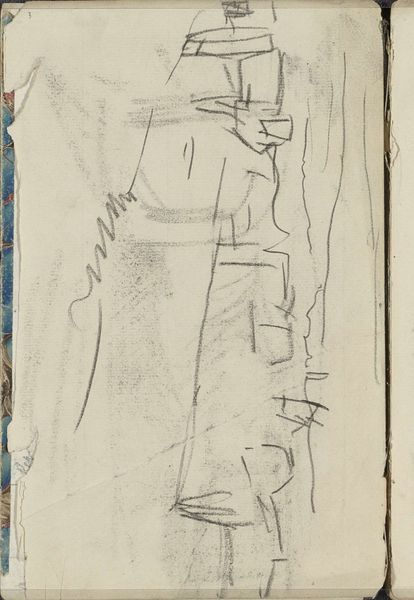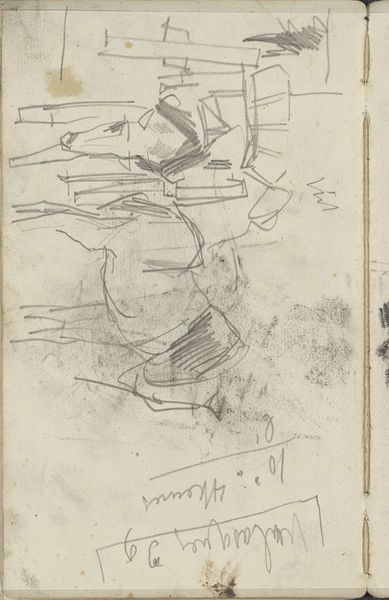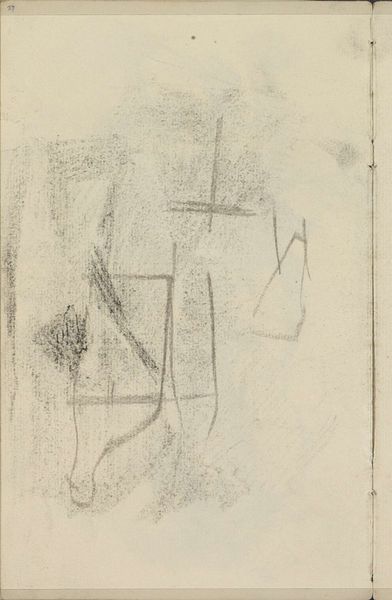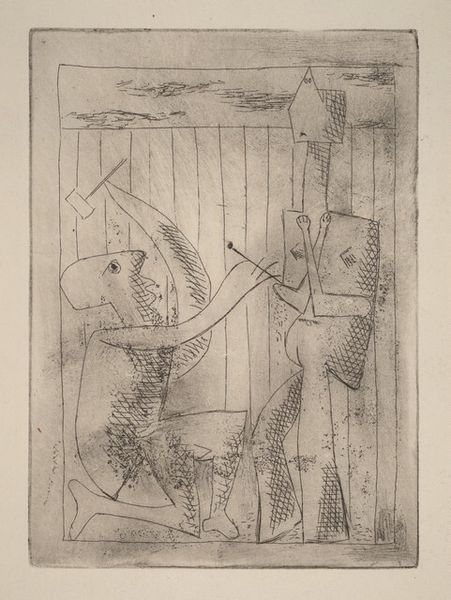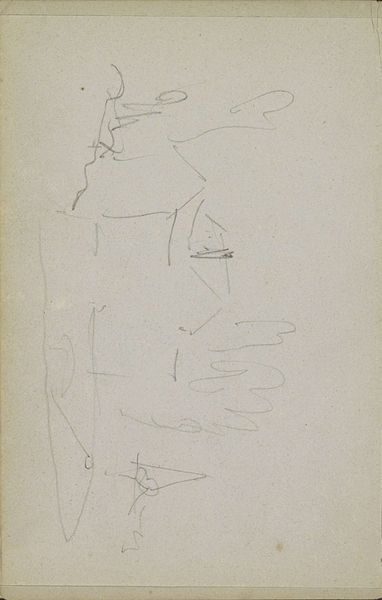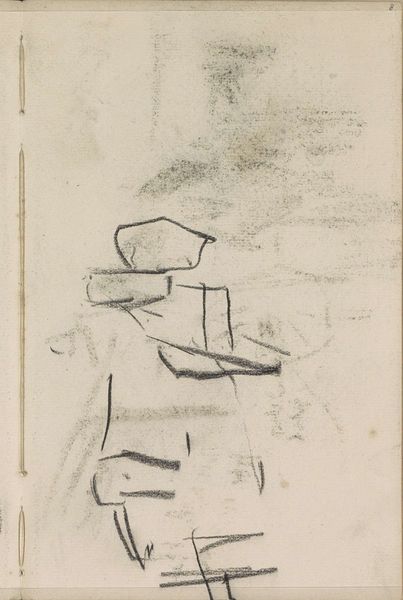
print, pencil
#
portrait
#
cubism
# print
#
pencil sketch
#
pen-ink sketch
#
pencil
#
abstraction
Dimensions: sheet: 31.2 x 22.5 cm (12 5/16 x 8 7/8 in.)
Copyright: National Gallery of Art: CC0 1.0
Curator: Picasso's "Man with a Dog," crafted in 1915, strikes me as both incredibly intricate and oddly intimate, especially for a Cubist work. It's like catching a glimpse of a very private moment fractured into shapes. Editor: Immediately, I'm drawn to the fact that this piece is a print—specifically, it seems like a pen and pencil sketch transferred to a plate. What interests me is the labor, how this image becomes reproducible, how the initial, perhaps impulsive sketch, gets mediated through industrial processes, for dissemination. Curator: You see, it speaks of longing to me, almost loneliness. The way the planes intersect feels like fragmented memories. I'm reminded of Picasso's own life—his deep connections, tumultuous relationships, all filtered through the chaos of his revolutionary style. Editor: Interesting. To me, the medium of print underscores not the individual experience, but its potential for mass consumption. The linear quality is achieved by repetitive gestures, possibly etching with acid; its strength comes from how the making parallels industrial repetition and the move toward an increasingly mechanized culture. The paper itself is cheap, perhaps from wood pulp. Curator: Ah, but look at the dog. He appears the most grounded amidst the abstract forms, providing the one solid, tender link. He’s not just a compositional element; he is a symbol of fidelity during an era consumed by global conflict. Editor: Well, consider what Picasso *isn’t* showing us, too. We're dealing with printmaking supplies: acids for etching the plates, inks composed of pigments and binders. What specific materials were available? How much did these materials and processes impact the production speed of the work, the possible aesthetic qualities valued by collectors and gallery-goers, or even affect labor relations? Curator: Those questions give the piece a new and powerful resonance. Editor: Exactly! The materiality pushes us to examine its social and cultural life of its creation. That for me is where its power lies.
Comments
No comments
Be the first to comment and join the conversation on the ultimate creative platform.
